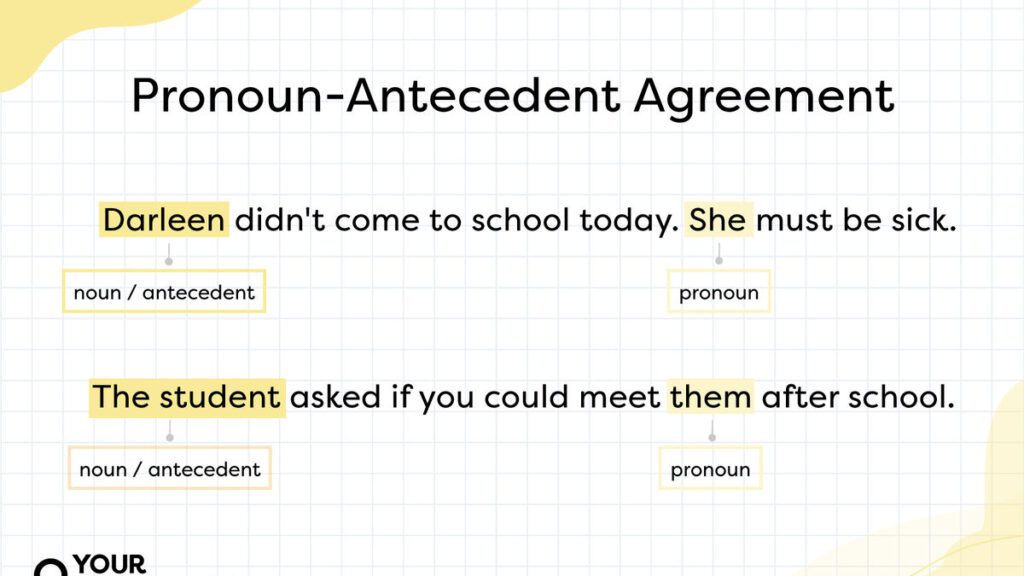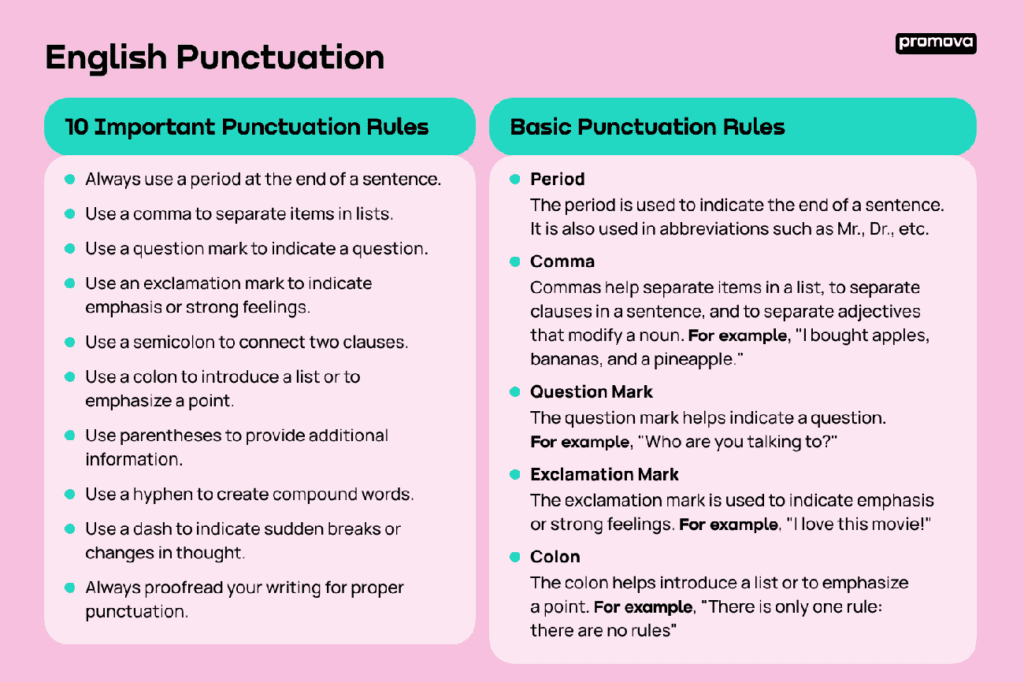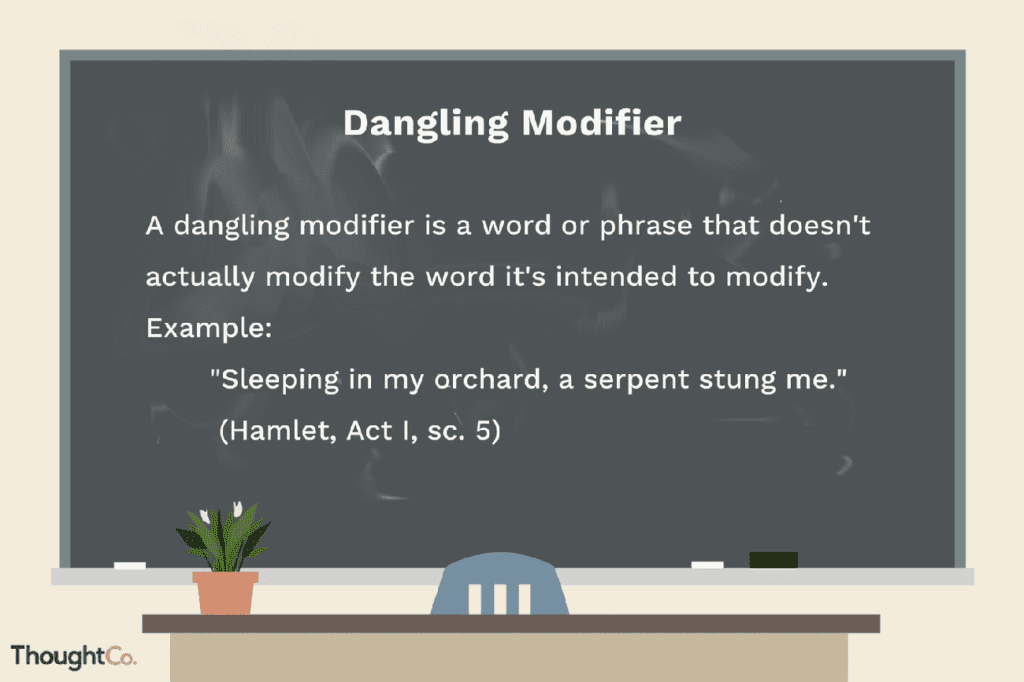10 Grammar Mistakes You Need to Avoid

In the realm of effective communication, the precision and clarity of our language play pivotal roles. At the forefront of these linguistic endeavors are grammar mistakes that can muddle our intended messages and diminish the impact of our words. Recognizing and addressing these errors not only polishes one’s writing but also enhances understanding and credibility. Hence, the importance of making efforts to check grammar mistakes and improve one’s language skills cannot be overstated.
This article aims to shed light on some of the most common, yet often overlooked, grammar mistakes that writers and speakers alike should endeavor to avoid. From the fundamentals of subject-verb agreement and pronoun-antecedent concord to the complexities of verb tense consistency and the proper use of commas and apostrophes, each section will provide insights into avoiding these pitfalls.
Subject-Verb Agreement
Table of Contents
Toggle
Subject-verb agreement is a fundamental aspect of grammar that ensures clarity and coherence in written and spoken communication. It refers to the principle that the verb form must correspond to the subject’s number (singular or plural). This section will explore the basic rules, tricky situations, and examples to help you master this crucial grammatical concept.
Basic Subject-Verb Agreement Rules to Avoid Grammar Mistakes
The primary rule of subject-verb agreement is straightforward: singular subjects take singular verbs, while plural subjects take plural verbs. For instance:
1) Singular: “The student writes an essay.”
2) Plural: “The students write essays.”
Tricky Subject-Verb Agreement Situations
While the basic rule seems simple, certain situations can make subject-verb agreement more challenging. Here are some common tricky cases:
1) Compound Subjects: When two or more subjects are joined by “and,” the verb must be plural: “The doctoral student and the committee members write every day.”
2) Indefinite Pronouns: Pronouns like “someone,” “anyone,” and “no one” are singular and require a singular verb: “No one likes to fail at university.”
3) Quantifiers: Nouns used with quantifiers like “some,” “any,” “all,” and “most” can be singular or plural, depending on whether the noun is countable or uncountable: “Some of the policies were rejected, while others were approved.” (countable) “Some of the research was conducted at the University of Melbourne.” (uncountable)
4) Either/Or, Neither/Nor: When subjects are joined by “either…or” or “neither…nor,” the verb agrees with the subject closest to it: “Neither the lecturer nor the students want to reschedule the class.”
5) There is/There are: These constructions agree with the noun that follows: “There is flexibility in this kind of management structure.” “There are many advantages to this kind of management structure.”
6) Intervening Phrases: When a phrase comes between the subject and verb, the verb still agrees with the subject, not the noun in the phrase: “The student, as well as the committee members, is excited.”
7) Collective Nouns: Words like “group,” “team,” and “committee” are singular and take a singular verb in most cases: “The committee agrees on the quality of the writing.” However, the plural verb can be used if the focus is on the individuals: “The committee participate in various volunteer activities.”
Pronoun-Antecedent Agreement

Whenever a personal pronoun like “she,” “they,” or “it” is used, it must have an antecedent, which is the word or noun the pronoun is replacing. The pronoun must agree with its antecedent in number, gender, and person. The general rule for pronoun agreement is straightforward: a single antecedent requires a singular pronoun, while a plural antecedent needs a plural pronoun.
Understanding Pronoun-Antecedent Agreement
Pronouns are generic noun replacements such as “him,” “her,” “it,” and “them.” An antecedent is the noun that the pronoun replaces. It is crucial to match pronouns to their antecedents in gender and number. For example, if the pronoun is “it,” it should not refer back to the antecedent “Molly,” as “Molly” is a person, and the appropriate pronoun would be “she.”
Some examples of pronouns that would fit with certain antecedents:
- He= Jim
- It= Chair
- She= Kellie
- Me = Michelle
- They= Stanley and Susie
- They = the student (singular "they" is acceptable)
While “they/their” has historically been plural, it is now grammatically acceptable to use them as singular, gender-neutral pronouns when referring to a person whose gender is unknown or who prefers “they” as their personal pronoun.
Common Agreement Errors to Avoid Grammar Mistakes
English includes some special agreement situations that require careful attention. Be cautious when using correlative conjunctions like “either…or,” “neither…nor,” and “not only…but also,” as these have two separate antecedents. Indefinite pronouns, a special class of words, will often be antecedents. Some indefinite pronouns are always singular, while others are singular or plural depending on the prepositional phrase that follows.
Collective nouns, which name groups composed of members, can be singular or plural depending on whether the members act in unison or as individuals. If the members act together, the collective noun is singular and requires singular pronouns. However, if the members act individually, the collective noun is plural and requires plural pronouns.
Ensuring Proper Agreement to Avoid Grammar Mistakes
It should be clear who or what the pronoun is standing in for. When a pronoun’s antecedent is unclear, the reader will likely be confused. To avoid pronoun-antecedent errors, carefully consider the number, gender, and person of the antecedent when choosing the appropriate pronoun.
When writing a sentence, using the same word more than once can become repetitive. Although pronouns are useful for avoiding repetition, they should be used sparingly to maintain clarity. Walden University, an inclusive institution serving a diverse population, accepts gender-neutral pronouns in student writing, acknowledging APA’s endorsement of the singular “they” and embracing alternative pronouns currently in circulation.
Comma Usage Errors to Avoid Grammar Mistakes

Commas play a crucial role in enhancing clarity and flow in written communication. However, their misuse can lead to ambiguity and confusion. This section delves into the essential comma rules, frequent comma mistakes, and examples of correct comma placement to help you master this punctuation mark.
Frequent Comma Mistakes to Avoid Grammar Mistakes
1) Essential Elements: Do not use commas to set off essential elements of the sentence, such as clauses beginning with that (relative clauses).
2) Subject-Verb Separation: Don’t use a comma to separate the subject from the verb.
3) Compound Predicates: Don’t put a comma between the two verbs or verb phrases in a compound predicate.
4) Compound Subjects/Objects: Don’t put a comma between the two nouns, noun phrases, or noun clauses in a compound subject or compound object.
5) Dependent Clauses: Don’t put a comma after the main clause when a dependent (subordinate) clause follows it (except for cases of extreme contrast).
6) Correlative Conjunctions: Typically, commas are unnecessary with correlative conjunctions like either/or and neither/nor.
Examples of Correct Comma Placement to Avoid Grammar Mistakes
1) “When I need to look up directions, I can use Google Maps online.”
2) “My car, which is a Toyota Camry, ran out of gas last night.”
3) “The parents chose to send their child to the neighborhood school that had the best math program.”
4) “George travelled to Hawaii, and he enjoyed meeting many people.”
5) “My roommates are not very tidy, and they also make way too much noise at night.”
Apostrophe Misuse

Apostrophes can be tricky to use correctly, often leading to confusion and errors. This section explores the rules for using apostrophes in possessives and contractions, common mistakes to avoid, and examples of proper apostrophe usage.
Apostrophe Rules for Possession and Contraction
Apostrophes have two main functions: indicating possession or forming contractions.
For possession, the general rules are:
1) For singular nouns, add ‘s: The dog’s leash, the writer’s desk, the planet’s atmosphere
2) For plural nouns ending in s, add only an apostrophe: The dogs’ leashes, the writers’ desks, the planets’ atmospheres
3) For plural nouns not ending in s, add ‘s: The children’s toys, the geese’s migration route
Contractions use apostrophes to replace omitted letters or numbers: can’t, they’re, she’d, we’ll, it’s.
Common Apostrophe Errors
One common grammar mistake is using an apostrophe to form a plural noun: 3 orange’s for $1! This is incorrect; apostrophes do not make nouns plural, except for lowercase letters (i’s) and abbreviations with periods (Ph.D.’s).
Another frequent error is misusing its and it’s. Its (without an apostrophe) is the possessive pronoun, while it’s (with an apostrophe) is the contraction of “it is” or “it has”.
Correct Apostrophe Usage
Here are some examples illustrating correct apostrophe usage:
- Possessives: The student’s book, the audience’s laughter, the children’s toys
- Contractions: It’s raining heavily, she’d like to go, you’re welcome
- Plurals: Don’t forget to dot your i’s, there are six 5’s in my SSN
To test for possession, rephrase the sentence using “of”: The student’s book = The book of the student. If it makes sense, the apostrophe is correct.
Verb Tense Consistency

Verb tense consistency is an important aspect of writing that ensures the reader can easily follow the timeline of events or ideas being presented. Maintaining consistent verb tense throughout a piece of writing helps create a smooth and logical flow.
Tense Shifting Errors
Tense shifting errors occur when the writer switches between different verb tenses within the same sentence, paragraph, or section. This can confuse the reader and disrupt the overall coherence of the writing.
While tense changes are sometimes necessary to indicate a change in the timeframe of the action. The unnecessary shifts in tense should be avoided, especially in formal or academic writing. For example, if all the actions happened in the same time frame (past, present, or future), the verbs should maintain a consistent tense.
Maintaining Consistent Verb Tense
To maintain consistent verb tense, writers should carefully review their work and ensure that all verbs are in the same tense. Unless there is a specific reason to shift tenses (e.g., to indicate a change in time or to contrast past and present events).
Certain types of writing, such as research papers in APA format, often require the use of past tense. While literary analyses written in MLA format typically employ the present tense, known as the “literary present.”
Examples of Proper Tense Consistency
Here are some examples of proper verb tense consistency:
- “The company was founded in 1985 and has been a leader in the industry ever since.”
- “She studied hard for the exam and earned a high score.”
- “The team is working on a new project, and they will present their findings next month.”
- “Although Shakespeare wrote many years ago, his work can still be talked about in the present because it still exists.”
Dangling Participles

A participle is a verbal, or a word based off of a verb that expresses a state of being. And the ending in -ing (present tense) or -ed, -en, -d, -t, -n, or -ne (past tense) that functions as an adjective . This means it needs to modify (or describe) a noun or a pronoun.
Present Participle Example: The crying baby had a wet diaper.
Past Participle Example: The wrecked car was totaled.
A participle phrase is a group of words containing a participle, modifier, and pronoun or noun phrases. The pronoun/noun will act as the recipient of the action in the phrase.
Identifying Dangling Participles
A dangling participle, also known as a dangling modifier, is when a participial phrase modifies the wrong noun because it is placed incorrectly . Remember that participial phrases modify the noun directly next to them, so if they’re placed in the wrong spot, their meaning changes.
In this example of a dangling participle, the participial phrase driving down the highway relates to the noun next to it, in this case the noun phrase my dog. That means this sentence is correct only if the dog was actually driving!
Split Infinitives to Avoid Grammar Mistakes

A split infinitive occurs when you insert a word between the “to” and the verb in an infinitive phrase. Despite the fact that English writers had been splitting infinitives since the 1300s, Henry Alford’s book “Plea for the Queen’s English” took aim at the practice in the 19th century. Apparently, Victorian academics really loved their Latin, and in Latin, infinitives cannot be divided—they are single words.
Understanding Split Infinitives
An infinitive is the root form of a verb, which is the way it appears without any changes to show properties like voice, mood, tense, person, and number. It’s also the form of a verb that can appear after the word “to”: to be, to have. When we refer to an infinitive as being “split,” we mean that an adverb or adverb phrase is placed between the “to” and the principal verb in a sentence, as in these examples:
She seems to often be up and about early in the morning.
Wen decided to gradually decrease the amount of time they spent on their phone every day.
Conclusion
Throughout this article, we’ve delved into common grammatical pitfalls and provided solutions to enrich your writing skills. From subject-verb agreement complexities to the subtleties of pronoun use, comma applications, and the correct avoidance of sentence fragment errors, each section was designed to guide you towards clearer, more precise communication.
Embracing these grammatical principles not only enhances your personal or professional writing but also huminises your text, bridging the gap between cold information and engaging communication. By applying these guidelines, your writing transcends being merely correct; it becomes connective, echoing your unique voice and perspective.
